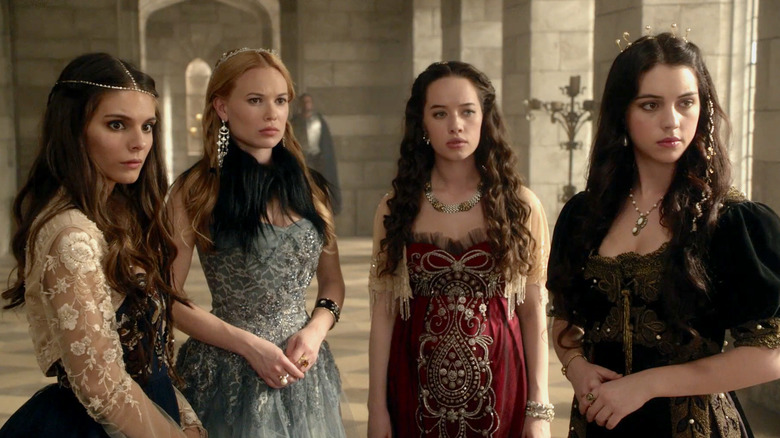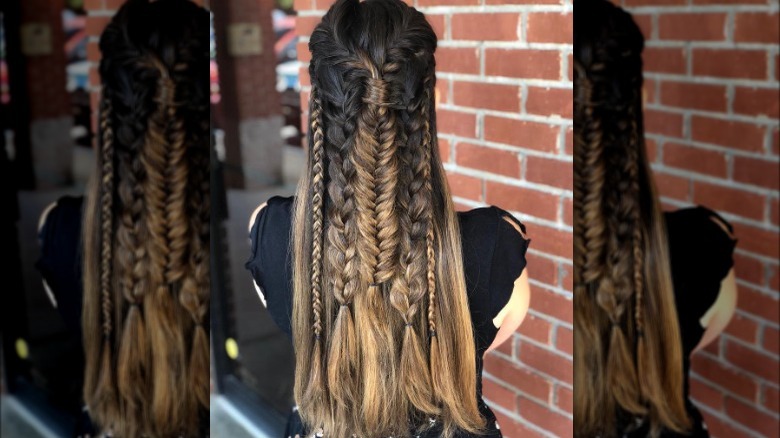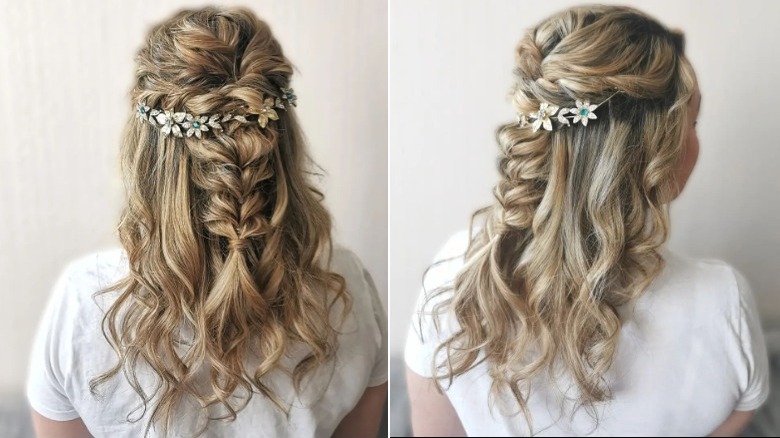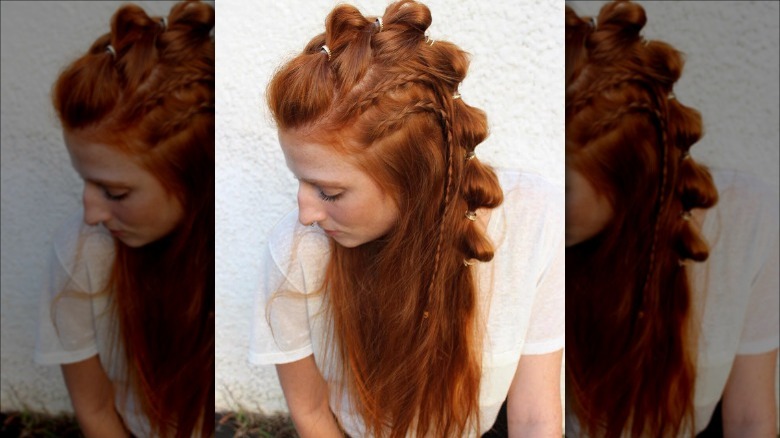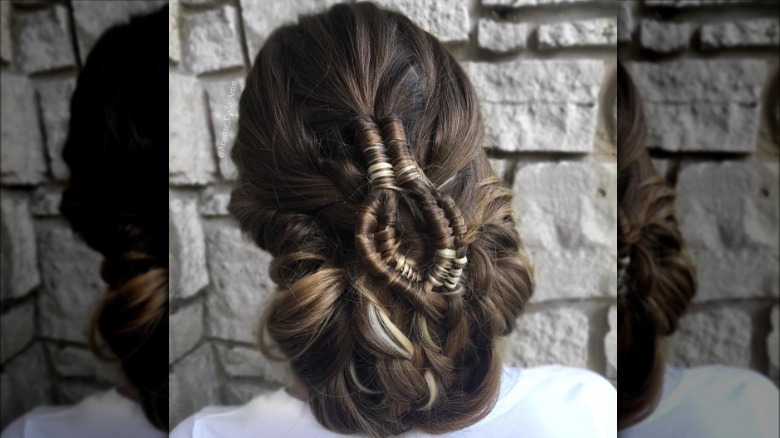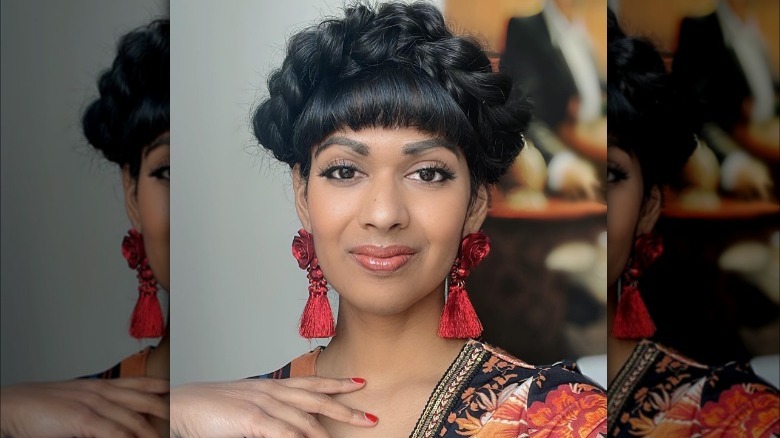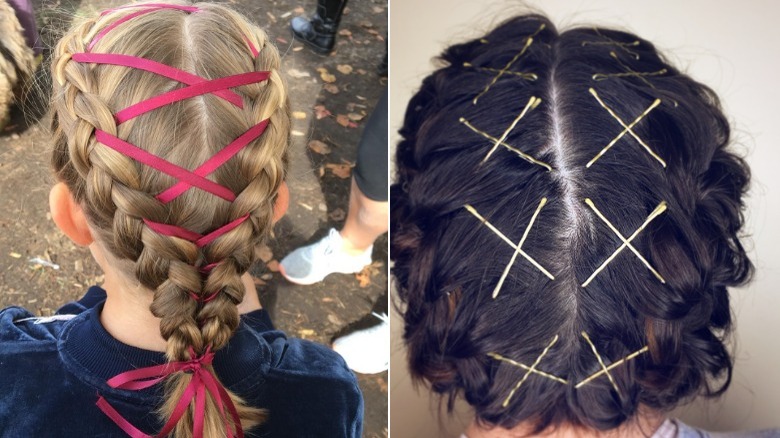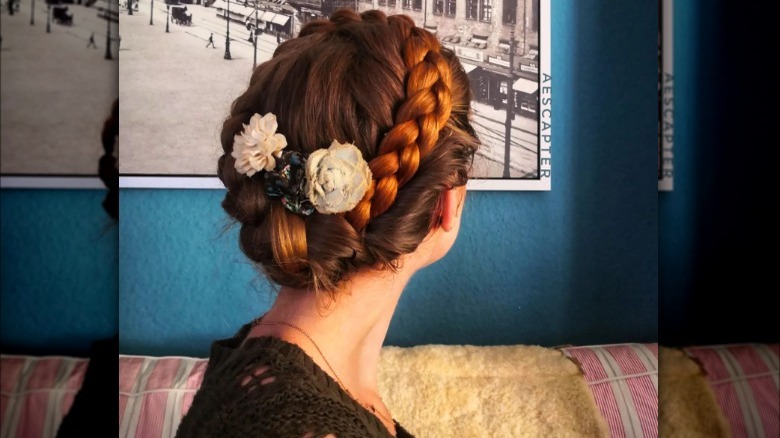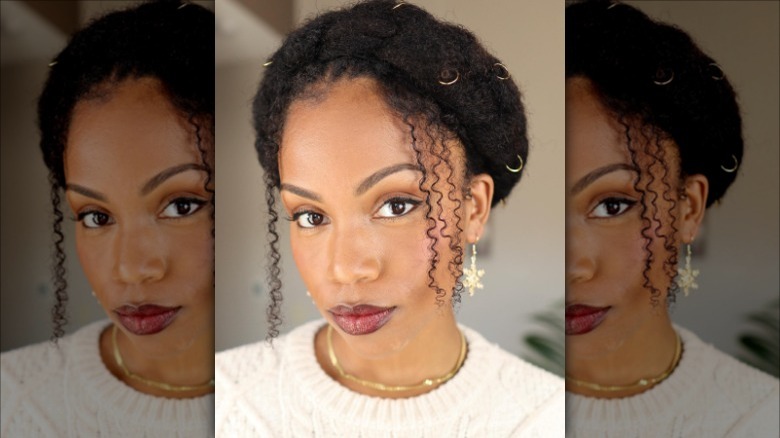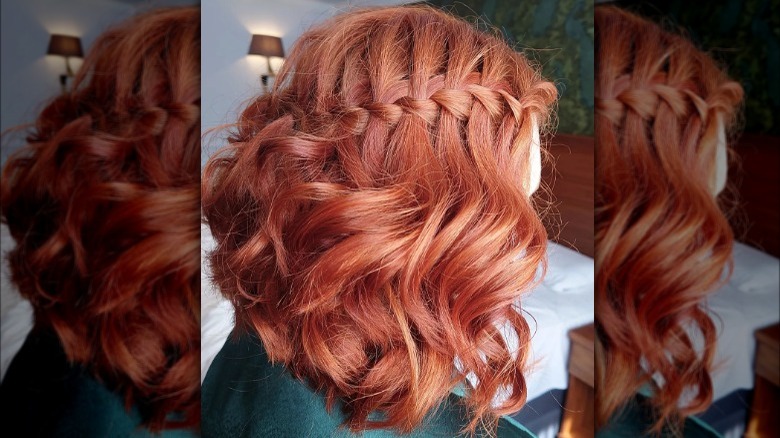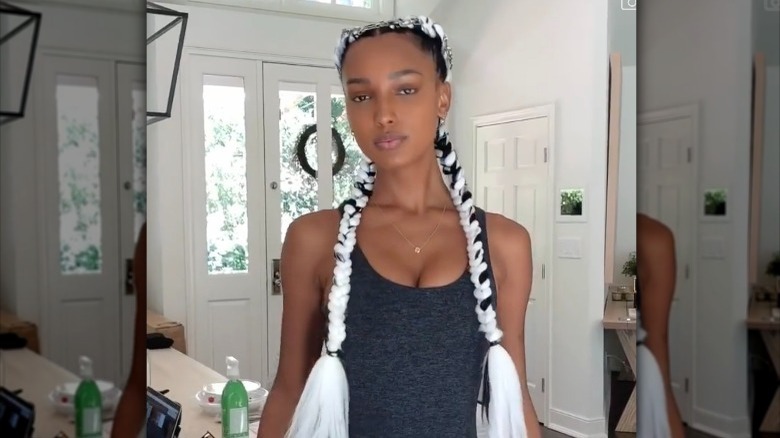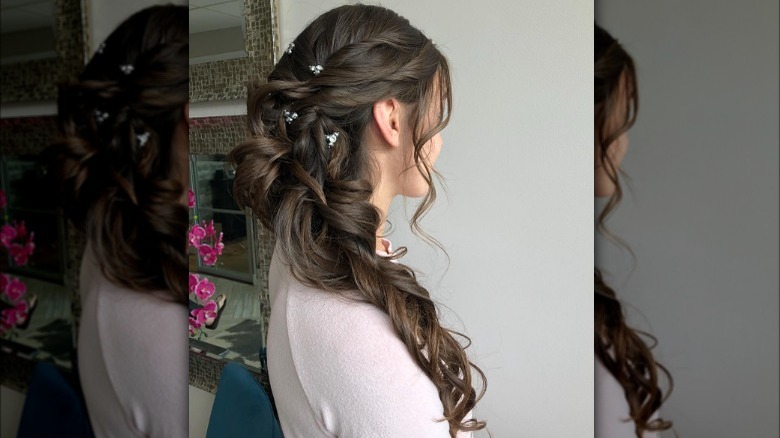Get Inspired By Medieval Hairstyles For A Different Look (Or For A Renaissance Fair)
Back in the day — way, way, way back in the day — women were just as interested in achieving the perfect hair looks as they are today. Medieval times were filled with long hair twined with ribbons and jewels, braided designs, romantic waves, and elaborate upsweeps. While a few face-framing tendrils could be seen in the front, as well as a few sparkly tiaras or jewels, the majority of the looks focused on detailed styling on the sides and back.
If you're headed to a Renaissance fair or are just looking for new mane inspiration, pause at the Middle Ages. You can go very traditional and recreate a medieval-style look just like back in the day, or you can adapt any design into a more modern vibe. (If you were a fan of the CW's classical romance series "Reign," you already know how easy it is to combine styles from the past with a today's kind of flair.) Braids and waves are timeless, and switching from traditional materials like fabric scraps to bobby pins is easy to do.
Whether you go romantic and dreamy with curls and waves, edgy with tiny braids, or fierce with faux-hawks, it's definitely worth going back in time to see what kind of old styles you can try in a new way. Mane inspiration is just a few centuries away, and also? Right here.
Create a braid. Or two. Or five.
Braids, braids, and more braids. If we could only pick one detail to represent medieval hair, it would have to be braids. And, they come in so many different styles. Mini-plaits and fishtails, fat Dutch braids and tight French braids, skinny sorts, and puffy ones — the options are plentiful. If you're looking for a style with a lot of texture, you can even mix up your braids all in the same look. Just pull the front half of your hair to the back, separate into sections, and start plaiting.
Hair jewelry is definitely a thing
What could be better than a pretty braid? One that's adorned with sparkly jewelry. To fancy-up your medieval hair look, dig through your jewelry box; in medieval times, ladies would tuck broaches and necklaces into their tresses for ornamentation, and so can you. Wrap a necklace around the crown of your hair, hiding the chain in front, and pin in place. Or, you can find actual hair accessories to complement your romantic braid look. If you're feeling DIY, most craft stores carry gems and beads in the jewelry-making aisles that can be transformed into ribbon-strung delights.
Try a fierce and fabulous take
While a lot of medieval-inspired hair looks lean toward the romantic side, you can go a little fiercer when you're in the mood — think "Game of Thrones" meets "Reign." A bubble braid can easily substitute for a mohawk when crafted straight down the center line of your mane. (Bubble braids aren't really braids; they're more like a divided-up ponytail, and super easy to do.) Add in a few skinny French braids on each side, and you've got a head-turning silhouette that even Merida wouldn't object to wearing.
It's complicated, but roll with it
In medieval times, elaborate hairstyles were left to rich ladies who had hair-savvy servants. Today, we have something better: professional hairstylists. While there are plenty of DIY hair looks with a Renaissance-fair vibe, others need more attention, like a rolled-hair updo. Perfect for weddings, dances, or any other occasion that deserves the wow-factor, the intricate style involves wrapping lengths of hair around other lengths of hair, maybe even with a pipe cleaner or two thrown in for extra shaping. It's complicated, but worth the effort.
Bangs work, too
You might not see bangs in a lot of medieval hairstyles, but that doesn't mean they don't belong there. Your fringe can easily be incorporated into any Renaissance-worthy mane move, and the crown braid is a perfect example. Just plait hair into two braids, one on each side, then wrap them around the crown of the head so they resemble an actual queen-like crown. Your bangs can stay right where they are, perfectly framing your face below your royal mane.
Choose your crisscross
When the medieval ladies wanted to dress up their braids, they used ribbons or, in a pinch, fabric strips. As a bonus, the ribbons also helped secure the braids, ensuring they stayed in place, no matter what the day brought (church, embroidery, jousting knights). In a dual-braided style, weave the ribbon back and forth through the braids (a plastic needle can help), crisscrossing as you go. If you're looking to modernize the trend, opt for shiny bobby pins instead of a ribbon, arranging them in X shapes inside a braided crown.
Flower power
The crown braid is both traditional and pretty when it comes to medieval hair. It's also popular at outdoor summer events like weddings and Renaissance fairs, because it keeps long hair from creating sweaty necks. The trick of the design is to create two braids, close together, at the nape of the neck. Crisscross the braids, then wrap the lengths around the crown of the head. Pretty, right? Add in a few flowers, though, and you've gone straight into gosh-darn-pretty territory. Use faux blooms to thwart wilting in the summer heat.
The easy way, with rings of gold
You could spend a half hour or so braiding and pinning your hair. It could be a lot of fun. But if time is a factor, or your fingers just can't figure out the mysterious pattern of plaiting, you might want to consider an easier way to get a medieval-inspired style: a hair piece. Specifically, a braided headband. Available in a variety of hair textures, colors, and sizes, they slip on over your own mane, already perfectly plaited and ready to adorn as you see fit. Maybe with a few gold rings.
The short-hair version of medieval hair
It's true that Renaissance fairs are filled with maidens bearing flowing long locks, but short-haired women can take inspiration from medieval styles, too. All it takes to join in on the fun is the right braid. Presenting the waterfall plait, named so because it looks like hair is flowing through the braid like water. Starting at the front, hair is plaited on each side, with the braids meeting in back in a mini twisted chignon. Pair with waves for a total romantic Renaissance feel.
Medieval, the modern and edgy way
If you prefer pretty cool to just pretty, try this on for a vibe. Working with two contrasting hair colors (faux hair pieces would work here, too), divide hair down the middle and create two thick Dutch braids, aka reverse French braids. Don't stop there, though. The duo mane shades are cool, but you can add even more edge with a length of chain (maybe stolen from a knight's chainmail armor?). Weave the chain through and between the braids, creating a crisscrossed pattern of epic proportions.
Romance is in the hair
You could wear your medieval-inspired hair to a Renaissance fair, but you could also walk down the aisle. Waves, braids, twists, and pretty accessories are all excellent ingredients for the ultimate romantic bridal hair. Pull subtle twists of locks away from the face (save a few side tendrils), and join them with the length in back. Roll and twist parts of the hair into a not-messy, messy partial upsweep, and curl everything that's still unattached. Tuck in pearl or gem clips here and there, and the result is magical.
